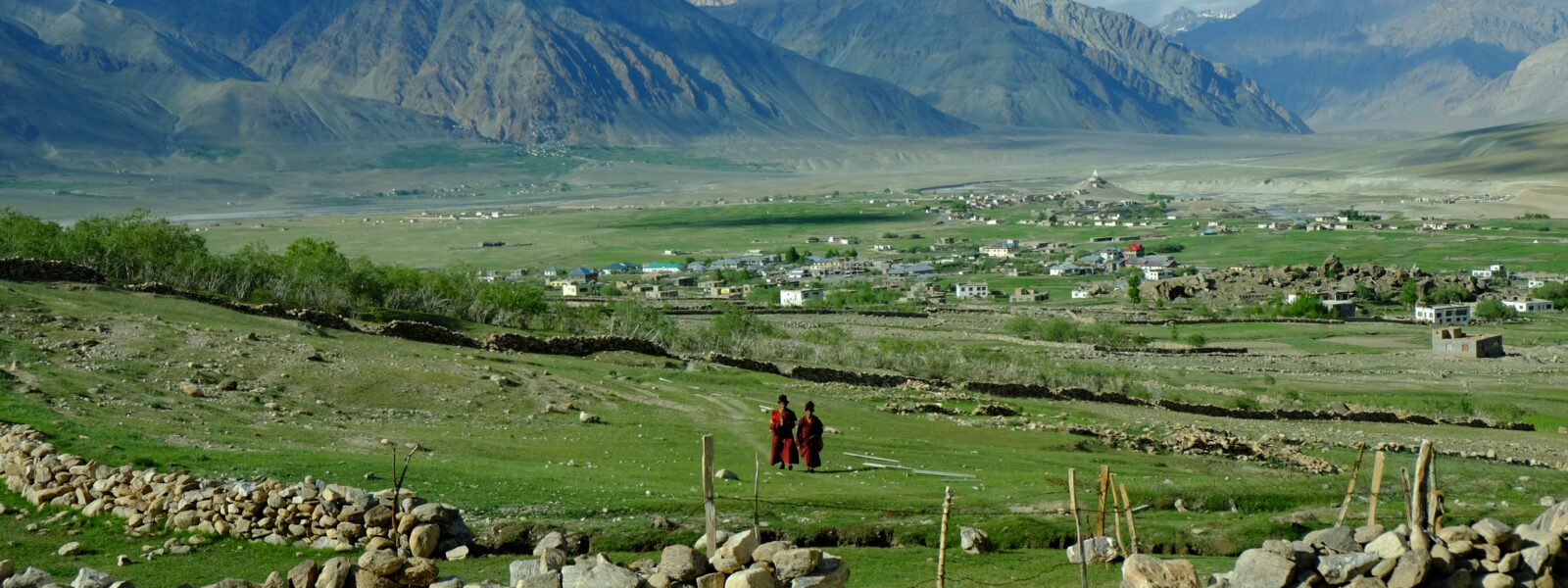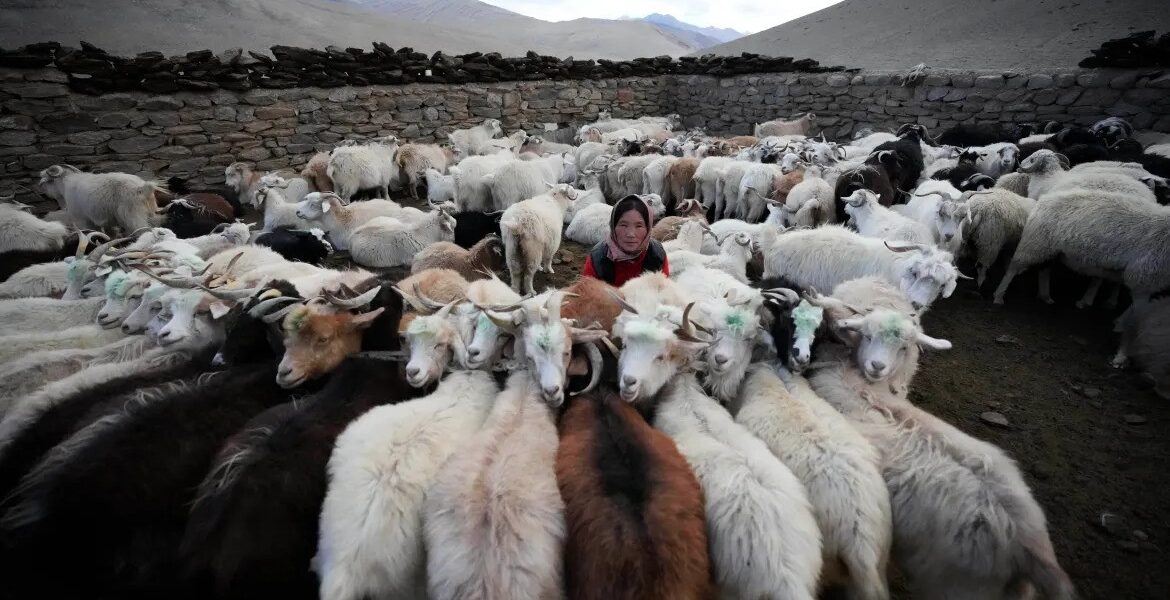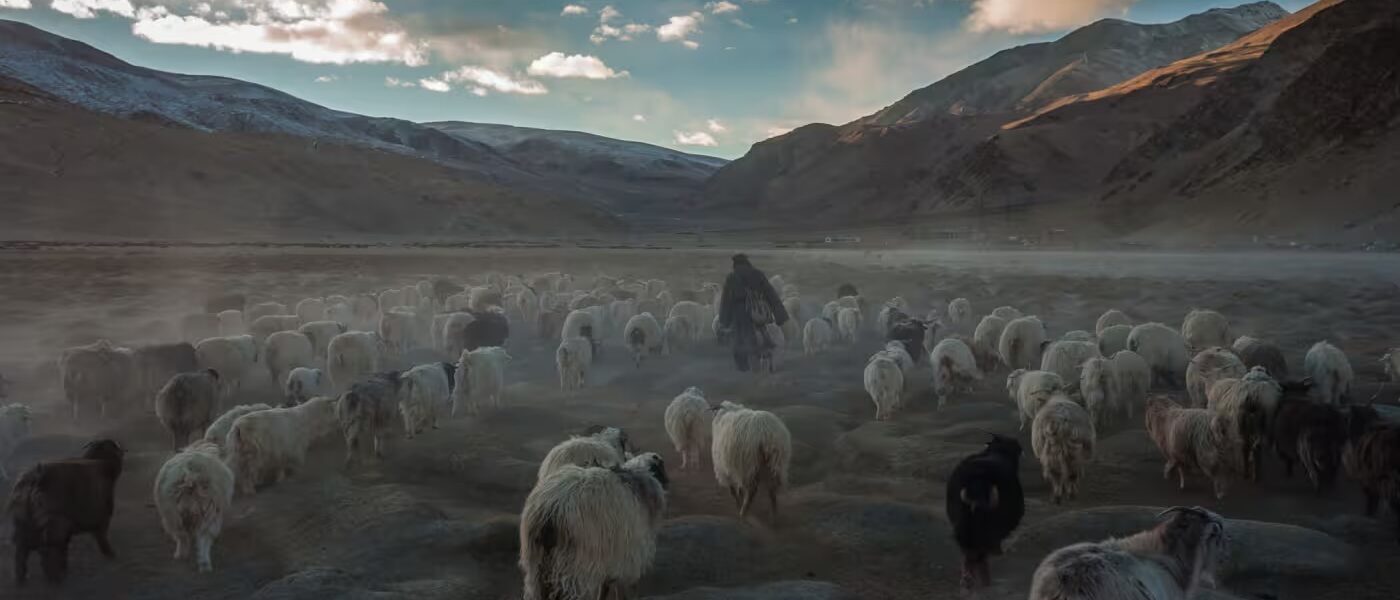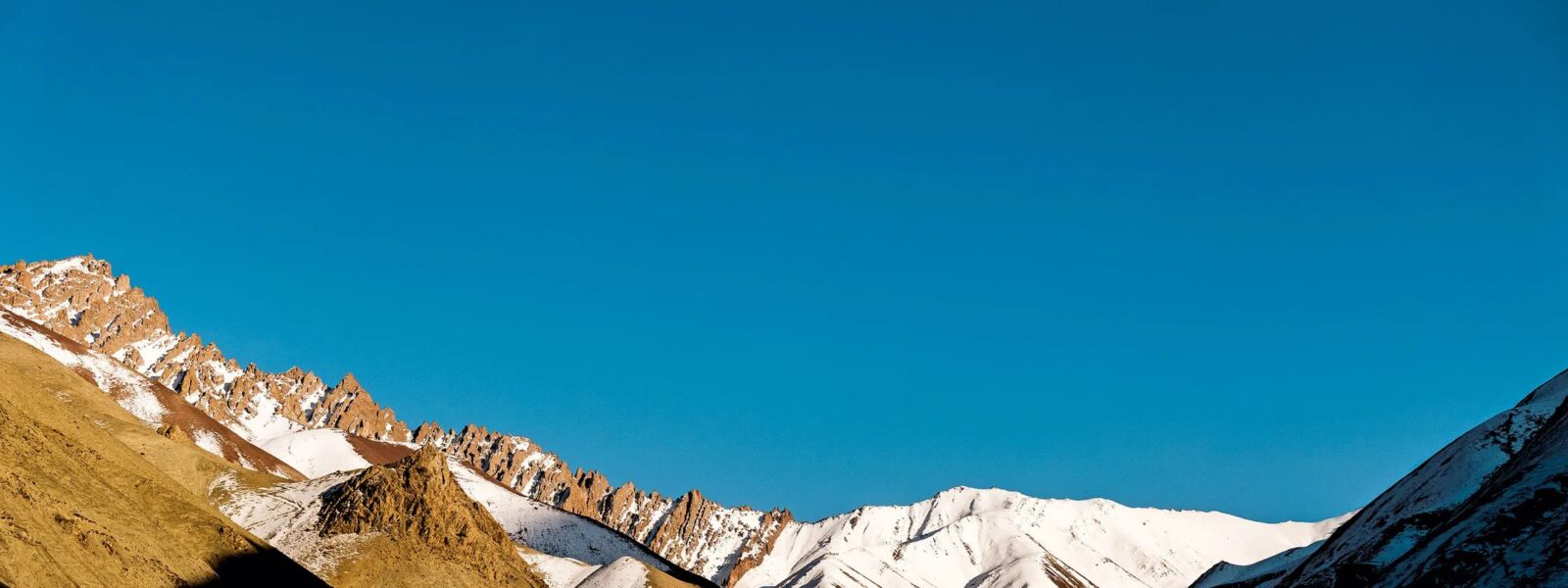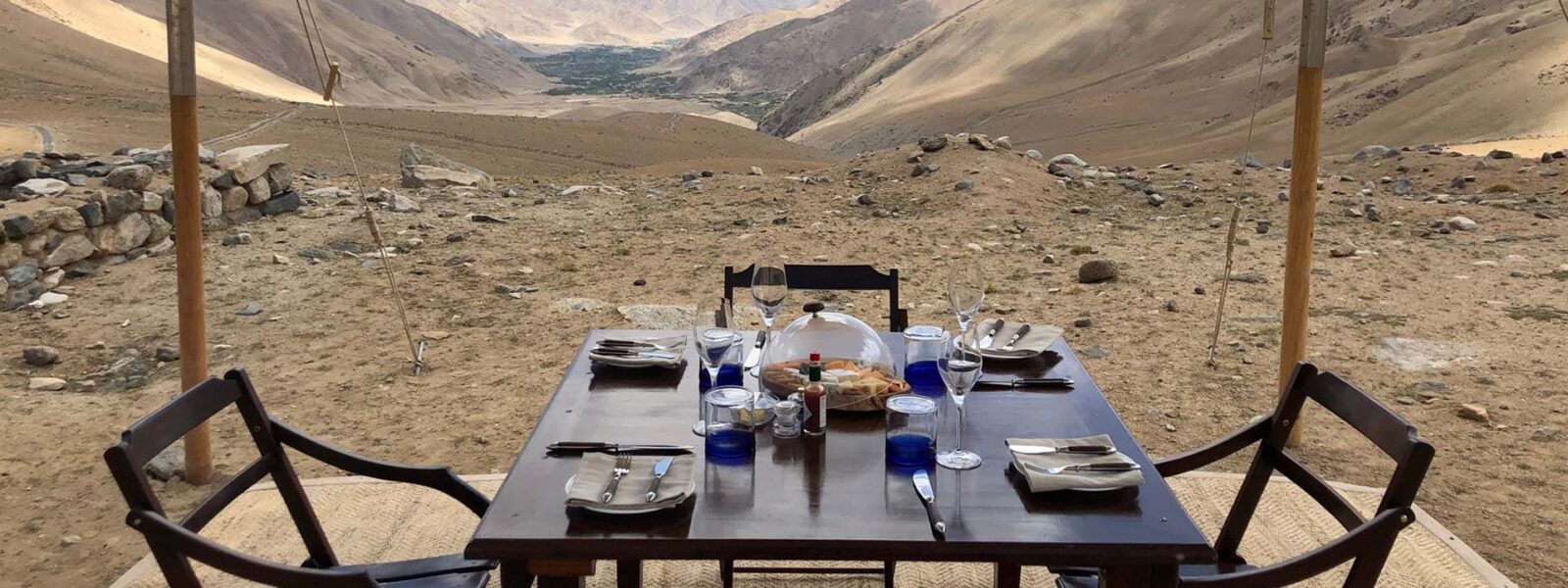Why Padum Matters in the Heart of Zanskar
Nestled deep within the stark and spectacular landscapes of the Indian Himalayas, Padum is not just another remote mountain settlement — it is the living, breathing center of the Zanskar Valley. As the administrative headquarters of the region, Padum offers a rare blend of functionality and heritage in a place where modern governance brushes shoulders with timeless spiritual traditions.
Padum may appear modest at first glance, with its humble cluster of buildings and unpaved lanes, but it plays a central role in shaping life in this remote corner of Ladakh. It is here that the district officials are based, where schools and health centers are established, and where traders, monks, trekkers, and nomads often cross paths. While many villages in Zanskar remain cut off for months during winter, Padum stays accessible for a longer window and serves as the region’s logistical lifeline.
Once the capital of the ancient kingdom of Zanskar, Padum carries a historical weight that is still palpable in its atmosphere. From the nearby ruins of palaces to the chants echoing from centuries-old monasteries, the town bridges the past and present. Its name is believed to be derived from Padmasambhava (Guru Rinpoche), the revered Buddhist master who is said to have meditated in the region. Today, this cultural legacy is kept alive through festivals, daily rituals, and the hospitality of the Zanskari people.
Visitors are often surprised to find small cafés serving ginger tea, bakeries selling fresh bread, and even a mobile network signal strong enough to send a photo back home. Yet despite these conveniences, Padum retains a rugged edge. Life here is dictated by the elements: by snow and sun, by altitude and silence. It’s this interplay between ancient stillness and administrative purpose that gives Padum its unique character.
For travelers seeking more than just high-altitude beauty — for those who wish to understand how modernity and tradition coexist in the farthest reaches of the Himalayas — Padum is essential. It is the starting point of many treks, the endpoint of many stories, and the pulse of Zanskar’s evolving identity.
Padum Zanskar is not just a place on the map. It’s a portal into the soul of Ladakh’s most isolated valley, where every dusty footpath leads to a monastery, a story, or a quiet moment of awe beneath the towering peaks.
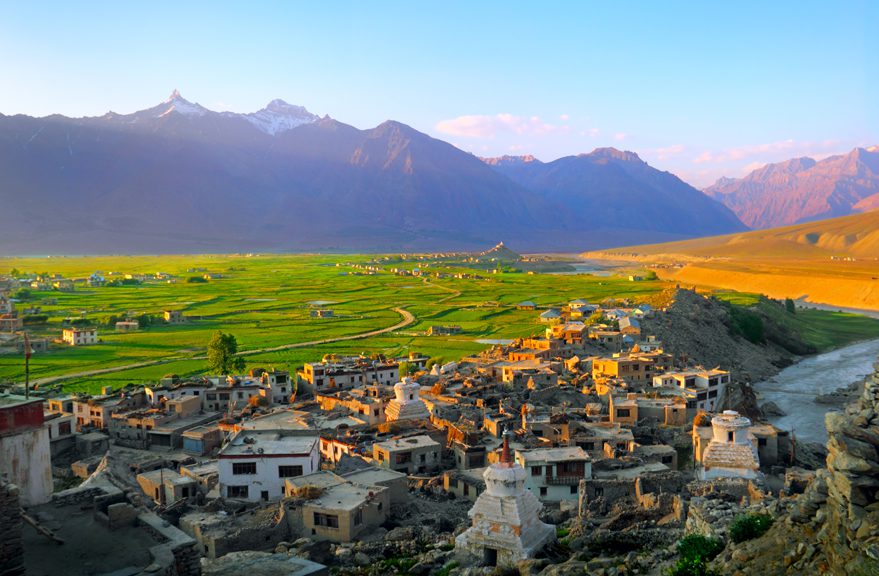
How to Reach Padum: A Journey Through the Himalayas
Reaching Padum is not just a matter of distance — it’s a journey through some of the most breathtaking and remote terrain in the Indian Himalayas. Hidden away in the high-altitude valleys of Ladakh, Padum rewards the adventurous traveler with a sense of profound arrival. Whether you’re coming for trekking, exploration, or spiritual retreat, the route itself becomes part of the story.
Most travelers begin their journey to Padum from Leh, the capital of Ladakh. However, there is no direct road to Padum from Leh via the Indus Valley — the route typically involves heading west toward Kargil, a major transit point. From Kargil, the journey continues southward through the lush Suru Valley, where the scenery shifts from arid desert to glacier-fed rivers, green meadows, and scattered hamlets clinging to cliff sides. This route, roughly 230 kilometers long, is open only during the summer months — typically from mid-June to early October — when snow has cleared from the high passes.
The drive from Kargil to Padum takes 10 to 12 hours, depending on road conditions. It crosses Pensi La Pass (4,400 meters), a dramatic high-altitude gateway into the Zanskar Valley, often lined with prayer flags and flanked by panoramic views of the Drang Drung Glacier. The descent into Zanskar reveals an entirely different world — rugged, raw, and resolute.
For those coming from Himachal Pradesh, there’s another route — the epic Darcha to Padum trek. This is one of the great trans-Himalayan journeys, requiring multiple days of hiking or horseback travel, crossing passes like Shingo La (5,050m). While this path is only viable for well-prepared trekkers in the right season, it remains a legendary trail for those seeking Padum from the south.
Public transportation to Padum is extremely limited. Occasional buses run between Kargil and Padum during the high season, but delays due to landslides or roadwork are common. Shared taxis and private jeeps are more reliable options, especially for those with limited time. Hiring a vehicle in Kargil, often shared with other travelers, allows for flexibility and additional stops at scenic points such as Rangdum Monastery or the Sankoo meadows.
How to get to Padum is a common question, and the answer reveals the isolation that defines Zanskar itself. This remoteness is not a disadvantage — it’s part of the region’s charm. The journey to Padum demands patience, but each turn in the winding road brings you closer to landscapes untouched by time and silence steeped in centuries of prayer.
In the coming years, the under-construction all-weather road from Nimu to Padum via Lingshed and Singe La is expected to open up Zanskar to year-round travel. But until then, to reach Padum is to cross into another world — one that remains unfiltered, raw, and remarkably real.
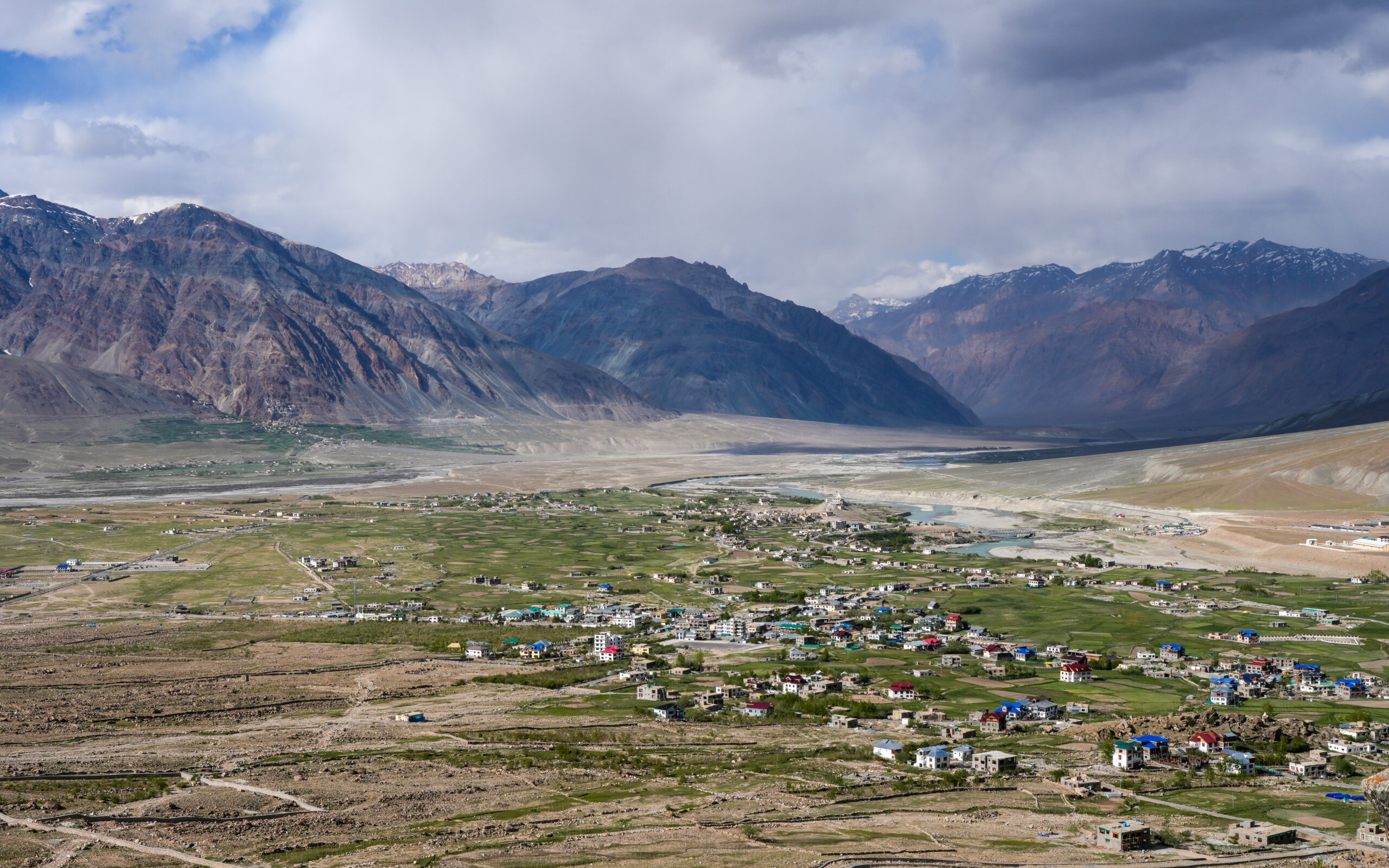
Top Places to Visit in and Around Padum
Padum isn’t just an administrative hub — it is the gateway to Zanskar’s most sacred, scenic, and culturally rich landmarks. The surrounding valley is dotted with centuries-old monasteries, ancient palaces, and high-altitude villages that offer deep insight into the spiritual and communal life of the region. Whether you’re an architecture enthusiast, a spiritual seeker, or a casual traveler, Padum opens the door to unforgettable experiences.
One of the most iconic destinations near Padum is Karsha Monastery, the largest and most influential gompa in Zanskar. Located just 10 kilometers from Padum, Karsha sits majestically on a hillside overlooking the valley, its whitewashed walls gleaming against the rugged cliffs. Home to over 100 monks, this 11th-century monastery is a living sanctuary of Tibetan Buddhism, complete with ancient murals, a rich library, and an annual masked dance festival that draws locals from all over the region.
Further afield lies Zangla Palace, the former royal residence of the Zangla kingdom. Though partially in ruins, the palace offers panoramic views of the valley and houses a small shrine that’s still in use. Visiting Zangla is like stepping back in time — a reminder of the days when Zanskar was ruled by its own dynasties, independent and remote.
Yet no journey to Zanskar is complete without a visit to the extraordinary Phuktal Monastery. Built into the side of a limestone cliff, this cave monastery looks as if it’s grown organically from the rock itself. Its isolation is part of its allure — accessible only by foot. However, modern travelers will be pleased to know that it is now possible to reach nearby villages such as Purne or Char by jeep from Padum. From either of these villages, the final approach to Phuktal involves a few hours of trekking through narrow trails that wind alongside the Lungnak River. The effort is well rewarded: the sight of the monastery clinging to the rockface, surrounded by the silence of the canyon, is one of the most moving images in all of Ladakh.
Another lesser-known but equally enriching destination is Stongdey Monastery, perched dramatically above the valley floor. It offers a quieter alternative to Karsha and is home to vibrant thangka paintings and a small community of monks who welcome respectful visitors. If you’re traveling in the right season, you might also witness a small puja ceremony or daily chants echoing through its prayer halls.
For those interested in nature and village life, consider day hikes or jeep rides to nearby hamlets like Sani (famous for its lake and ancient gompa), Pipiting, and Rinam. These settlements offer a glimpse into Zanskari agricultural life and are ideal for cultural photography, quiet reflection, or short homestay experiences.
Each of these places near Padum adds a layer to your understanding of Zanskar — its traditions, its resilience, and its beauty. The region may be remote, but its spiritual energy and dramatic landscapes are profoundly accessible to those willing to explore just a little further.

Trekking from Padum: Gateway to Zanskar Adventures
Padum isn’t just the administrative and cultural heart of Zanskar—it’s also the region’s most important launchpad for high-altitude trekking adventures. Surrounded by snow-capped ridgelines, glacial rivers, and remote villages, Padum serves as a base camp for explorers looking to immerse themselves in some of the most spectacular and untouched landscapes in the Indian Himalayas. For serious trekkers and wanderers alike, this valley holds some of the most iconic routes in Ladakh, accessible only by foot or mule.
One of the most famous treks starting from Padum is the Darcha to Padum trek, which crosses the dramatic Shingo La pass at over 5,000 meters. This route links the Zanskar Valley with Himachal Pradesh, and follows ancient trade and pilgrimage paths. The journey takes you through remote hamlets, sacred mani walls, and high alpine meadows dotted with yaks. It’s not just a physical adventure but also a deep cultural encounter with communities that live in tune with the seasons and sky.
Another must-consider route is the Padum to Lamayuru trek, an epic trans-Himalayan journey passing through the villages of Lingshed and Photoksar. This trek crosses multiple high passes, including the stunning Singge La, and showcases changing terrains—from dry desert valleys to green pasturelands. The trek also connects you with spiritual havens like Lingshed Monastery, offering rare glimpses of monastic life far removed from the modern world.
For those looking for something shorter but equally rewarding, the Padum to Phuktal Monastery trek is an ideal choice. The trail winds along the Lungnak River and ends at one of Ladakh’s most visually iconic monasteries, built into a cliff face. Along the way, trekkers pass small villages like Cha and Purne, where homestays offer warm food and an authentic taste of Zanskari hospitality. This trek is rich in both natural beauty and spiritual energy.
Other popular options include the Padum to Lingshed route, the Zanskar traverse towards Rangdum, and exploratory walks through local valleys like Zangla and Stongdey, which are perfect for trekkers seeking solitude without venturing into extremely high altitudes.
Trekking in and out of Padum typically requires proper acclimatization, as the average elevation of the region is over 3,500 meters. The best season to trek is from late June to early October when most passes are open and weather is relatively stable. Local trekking guides and horsemen can be arranged in Padum itself, and they bring unmatched knowledge of the terrain, customs, and climate.
For those wondering about logistics, know that Padum is not yet part of the standard trekking circuits in Ladakh. That’s what makes it so special. These trails are wild, meditative, and far from the crowds, offering an intimate experience with the raw essence of the Himalayas. From first-time trekkers to experienced mountaineers, Padum is where stories begin—and sometimes, where they’re transformed.
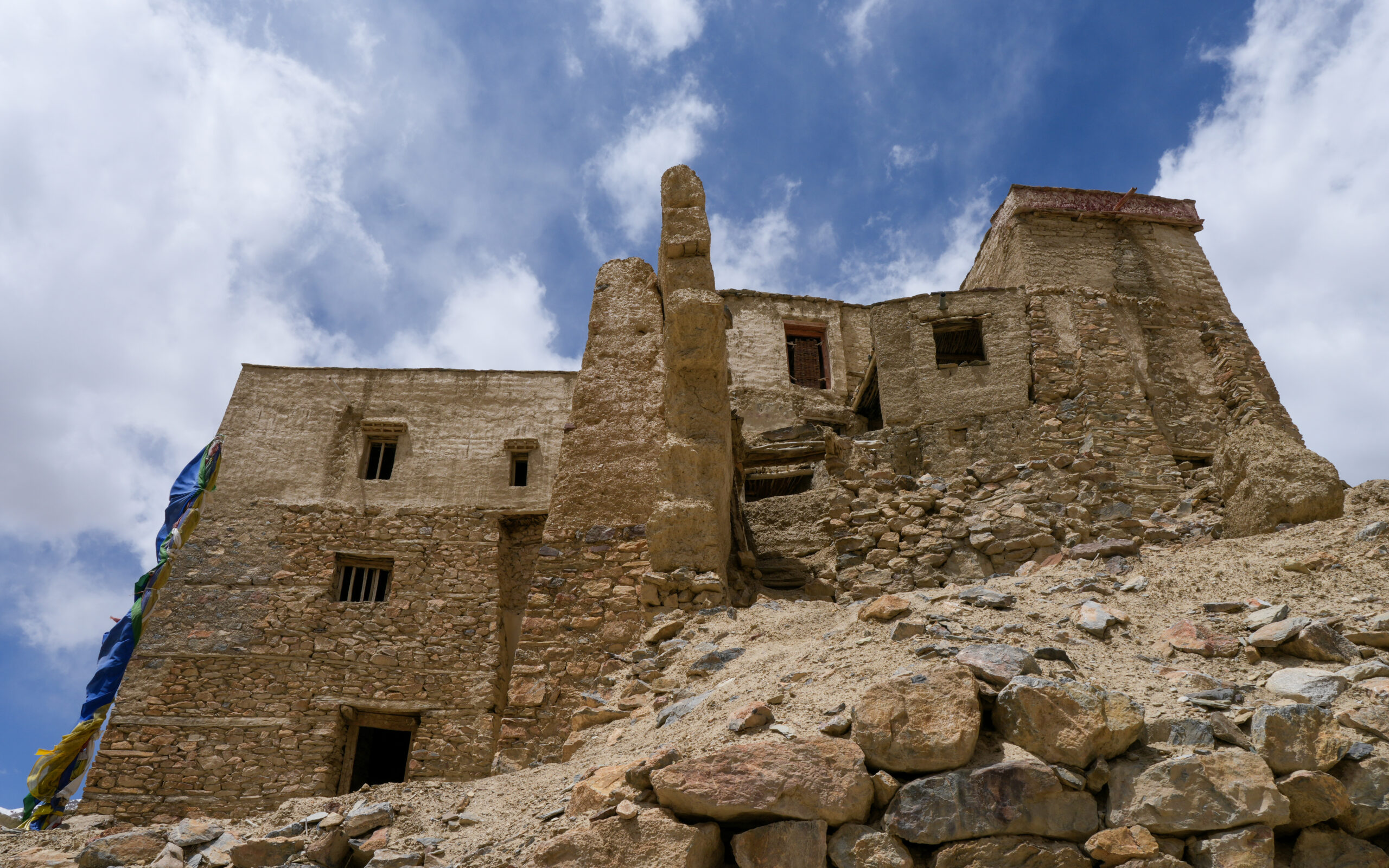
Where to Stay in Padum: Homestays and Guesthouses
Accommodation in Padum is a reflection of the valley itself—simple, warm, and rooted in community. While it lacks the polished hotels found in Leh or Manali, Padum offers something more authentic: the chance to stay in local Zanskari homes, wake up to views of snow-dusted peaks, and share butter tea with families who have lived here for generations. For those seeking immersive travel, choosing the right place to stay in Padum can turn a visit into an unforgettable experience.
Local homestays in Padum have become increasingly popular among responsible travelers and trekkers alike. These homes, often run by farming families, provide basic amenities—clean beds, hearty meals, and solar-heated water when available—but their true value lies in the cultural connection they offer. Staying in a Zanskari homestay means learning the rhythms of local life: helping churn butter, sharing stories over tsampa, and understanding how people survive in one of the harshest climates on earth. In villages like Pipiting and Karsha near Padum, homestays are especially welcoming and well-suited for foreign guests.
If you prefer slightly more comfort while still keeping close to local life, there are a few guesthouses in Padum that provide private rooms, attached bathrooms, and occasional Wi-Fi. Places like the Hotel Ibex or Padma Guest House cater to both budget and mid-range travelers. These accommodations are centrally located, making it easy to explore the market, monasteries, and starting points for nearby treks.
Camping is another option for adventure travelers, especially during trekking season. Some travelers bring their own gear, while others rely on tour operators who provide tents and cooks as part of a multi-day trekking package. While wild camping is permitted, it’s always recommended to seek permission from locals or camp near villages to ensure safety and minimize ecological impact.
For those visiting during festivals or peak trekking months (July to September), it’s wise to book in advance—even if that means calling ahead or arranging through a local tour company. Electricity and water shortages are not uncommon, so travelers should arrive with tempered expectations and an open heart. After all, the luxury of staying in Padum isn’t in thread count or room service—it’s in the silence, the stars, and the warm smiles of the people who call this valley home.
Whether you choose a rustic homestay or a simple guesthouse, accommodation in Padum enhances your understanding of Zanskar’s hospitality, resilience, and community spirit. Every roof you sleep under is more than shelter—it’s a story waiting to be shared.
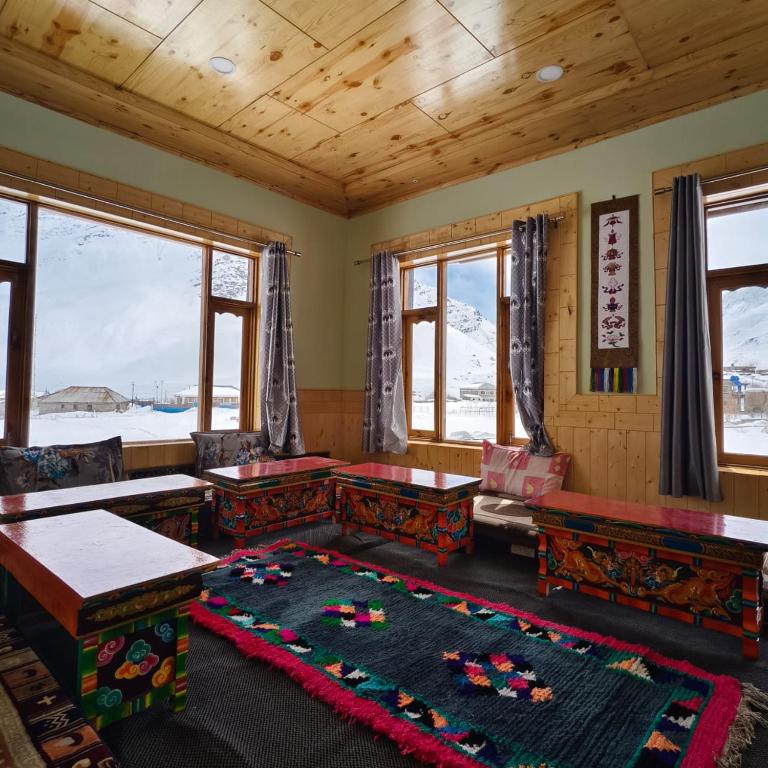
Practical Travel Tips for Visiting Padum
Traveling to Padum is a rewarding but demanding experience. The town’s remoteness, high altitude, and limited infrastructure mean that preparation is not optional—it’s essential. Whether you’re planning a cultural tour, a trekking expedition, or simply looking to experience life in one of Ladakh’s most isolated regions, the following practical tips will help ensure your journey is both safe and unforgettable.
Altitude and acclimatization should be your top priority. Padum sits at an elevation of approximately 3,650 meters (nearly 12,000 feet), and most travelers coming from lower altitudes may experience mild to moderate symptoms of altitude sickness. It’s advisable to acclimatize in Leh or Kargil for at least two nights before ascending further. Drink plenty of water, avoid alcohol, and ascend gradually whenever possible. If you’re trekking in from Darcha or doing a multi-day route, plan your stops to allow your body time to adjust.
Weather in Padum can be unpredictable—even in summer. Days may be sunny and warm, but nights often drop below freezing, even in July and August. Pack layers: a thermal base layer, fleece jacket, down outerwear, and waterproof shell are all recommended. Don’t forget sun protection either—the sun at this altitude is intense, and sunglasses, sunscreen, and a good hat are musts.
Connectivity is limited. While mobile networks are slowly expanding in Zanskar, signal strength is unreliable and data coverage is sparse. BSNL offers the widest coverage, but even that can go offline for hours—or days. Don’t rely on your phone for navigation or communication; instead, carry paper maps, backup power banks, and let someone know your itinerary in advance.
Cash is king in Padum. There are no reliable ATMs in town, and credit cards are rarely accepted. Carry enough Indian rupees to cover your stay, transport, and emergencies. It’s wise to withdraw cash in Kargil or Leh before heading toward Zanskar.
Permits are not required for Indian or foreign nationals to visit Padum as of the latest updates, but policies in Ladakh can change quickly. It’s always a good idea to check current regulations through a local tour agency or the District Magistrate’s office in Kargil before you set out. Treks that pass through restricted areas (especially near borders) may still require special documentation.
Eco-conscious travel is critical in this fragile region. Zanskar has no formal waste management system, so whatever you bring in should be packed out. Avoid plastic bottles—bring a refillable one and use water purification tablets or filters. Respect local customs, avoid photographing people without permission, and dress modestly when entering villages or monasteries.
Lastly, remember that Zanskar runs on its own time. Delays are common, electricity is intermittent, and things may not go as planned. But therein lies the charm. If you can embrace the unpredictability and lean into the experience, Padum will reward you with something rare: a deeper understanding of place, patience, and presence.
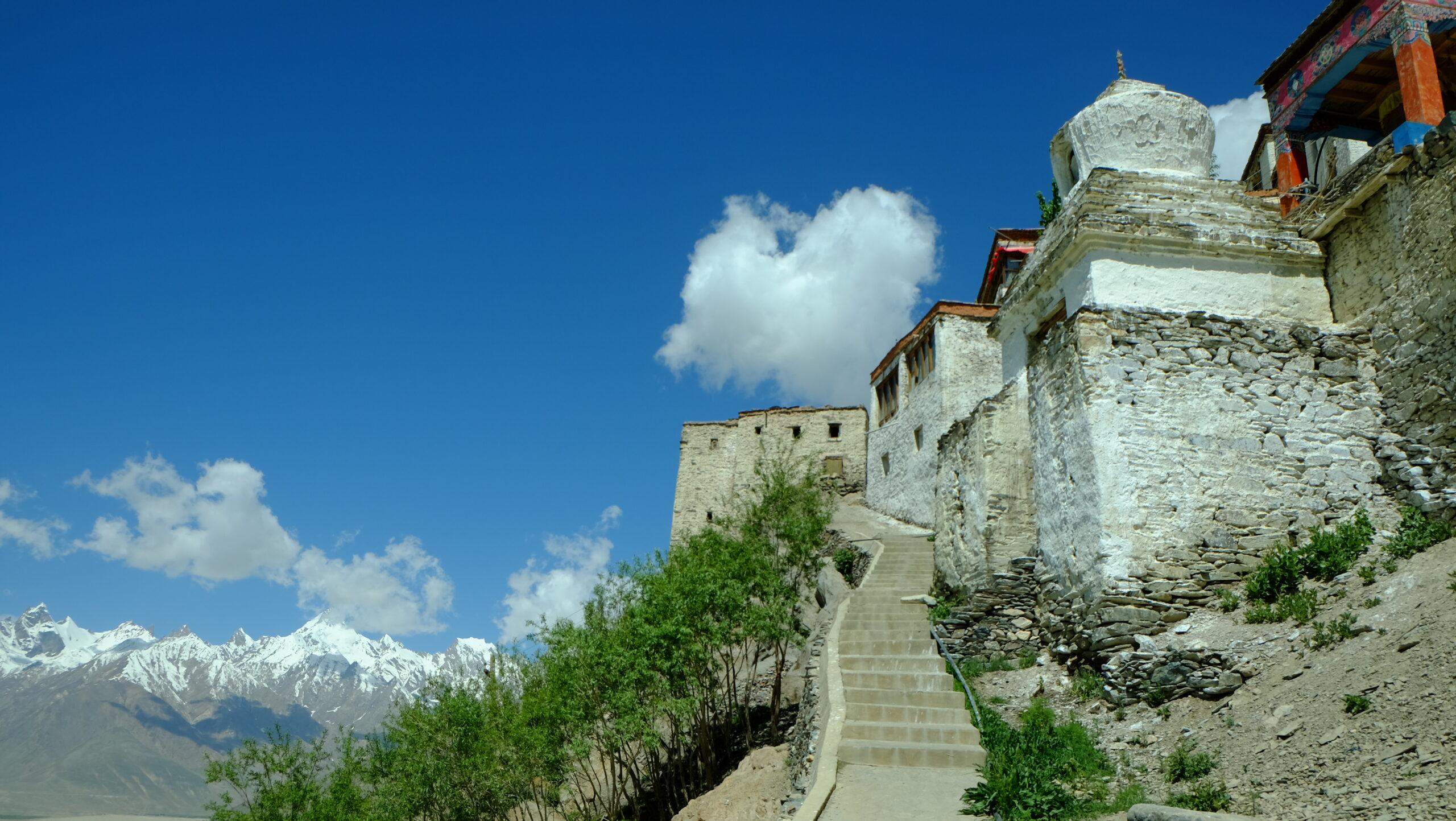
Final Thoughts: Discover the Spirit of Zanskar in Padum
Padum is not just a place you visit — it’s a place you feel. In this far-flung corner of the Indian Himalayas, time moves differently. The air is thinner, the silence deeper, and the encounters more meaningful. Here, amid prayer-flag-laced passes and ancient stone trails, you begin to understand what it means to travel not only across landscapes, but through centuries of tradition, resilience, and faith.
As the administrative heart of Zanskar, Padum plays a crucial role in modern life. Yet even as it grows into its function as a district center — with schools, hospitals, and government offices — the town never lets go of its deeper identity. Monks still walk barefoot across frozen paths. Farmers still chant as they plant barley. And trekkers still arrive with dust on their boots and wonder in their eyes.
Whether you come to Padum for a trek across high passes, a visit to Karsha Monastery, or a quiet homestay under a sky full of stars, you’ll find something rare: a region that is open yet untouched, known yet mysterious. Few places in the Himalayas offer such a balanced blend of accessibility and isolation. In Padum, the road ends — and something else begins.
The beauty of Padum lies in its contrasts: between silence and prayer, stone and sky, modernity and myth. And as tourism grows, it’s up to conscious travelers to protect this delicate balance. When you visit, come with humility. Listen more than you speak. Support local communities, leave no trace, and honor the pace of mountain life.
So if you’re looking not just for a destination, but for a journey that changes you — start here. Let Padum, the beating heart of Zanskar, lead you beyond the map, into the soul of the Himalayas.

